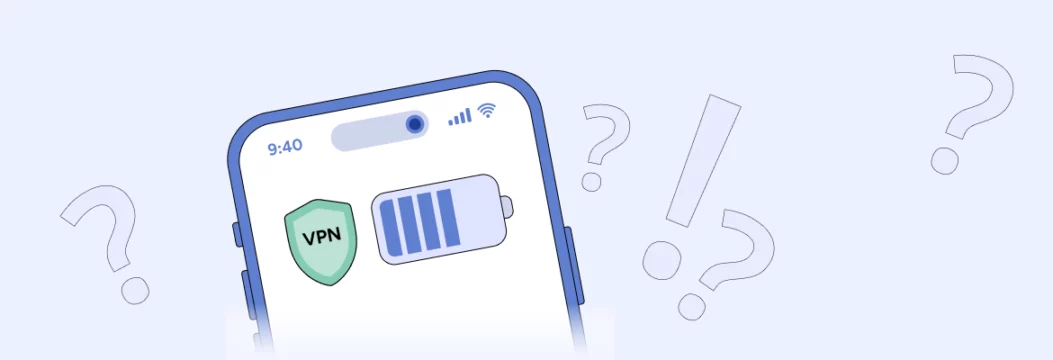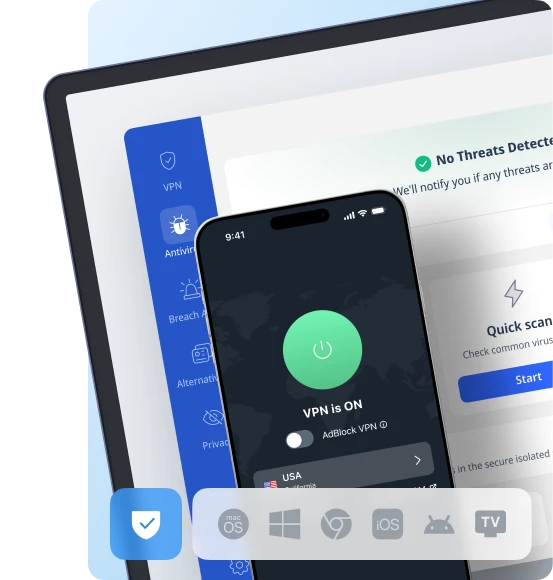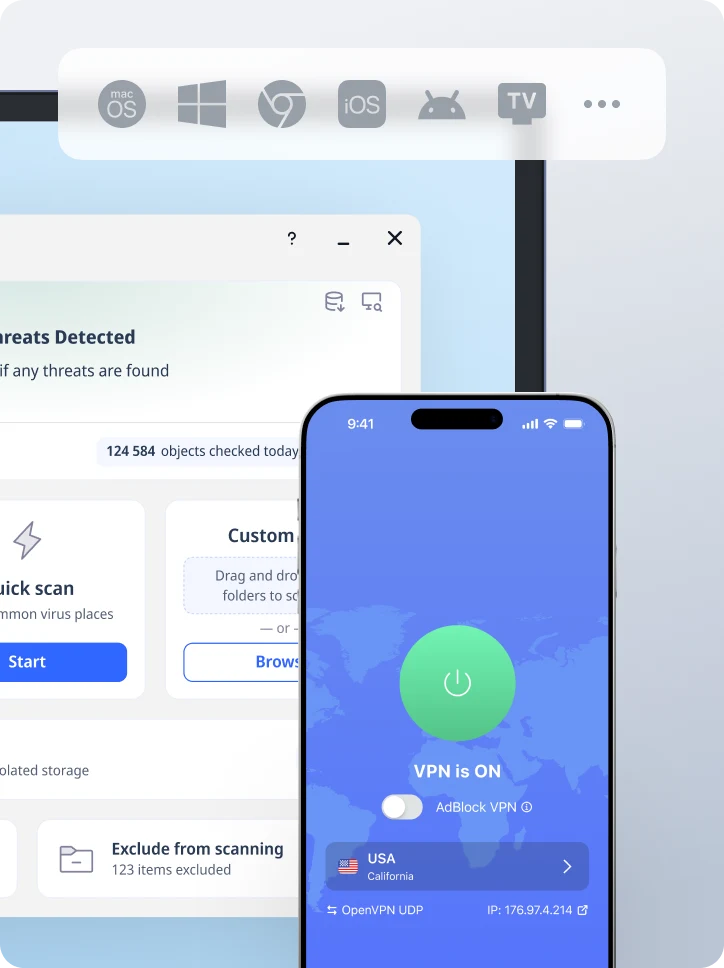10 Key Benefits of IoT for Consumers and Businesses
The Internet of Things, or IoT, allows everyday devices, like home and wearable appliances, industrial machines, or even vehicles – to be connected over the Internet. Connect IoT devices to create a network of connected devices that can automate tasks, collect real-time data, and talk to each other resulting in how we live and work. These can range from adjusting a smart thermostat on your way home to a factory using sensor data to predict machine failures before they occur. The future of technology is IoT, an innovation that has revolutionized many industries. From industries to homes, IoT is making a positive impact on efficiency, safety, and cost. In the next sections, you will read how IoT helps to under these advantages and we’ll also talk about good IoT security examples and why IoT security, for example a VPN, is so important.

Introduction to the Internet of Things
Also known as the Internet of Things (IoT), this is an ingenious system of physical objects (things) that are embedded with software, sensors, and technologies to connect and interact over the Internet. IoT devices encompass a wide array from smart home devices such as thermostats and security cameras to industrial machines and wearable health monitors, which can collect and transmit data to be monitored in real time, automated, and made decisions upon.
The IoT technology can revolutionize several areas of our lives. The quantity, then the issues, worry about security, handling information, collaboration are expressed. IoT systems in industrial automation are used for predictive maintenance thus promoting a better performance and increased efficiency and productivity. In healthcare, IoT devices can be used to track blood pressure, pulse, respiration rate, blood sugar levels, etc and transmit the collected data to healthcare providers remotely so that they can take timely action and enhance the patient outcomes.
And unlike billboards and static displays, digital signage is always connected to the business’ corporate network and managed to evolve with changing requirements. Real-time information is streamed by connected devices and immediately analysed to inform actions. IoT devices are always connected which means there could be huge savings in wasted products and they can also save money on maintenance.
Efficiency and productivity
IoT enhances the efficiency of homes as well as businesses by automating procedures and optimizing procedures. Moreover, IoT ensures energy efficiency in industrial environments by optimizing the use of machinery and minimizing unnecessary energy use. Data from IoT devices is also analyzed by companies to optimize how operations are done. Studies show that adding IoT technology helps companies improve business agility by allowing them to work faster and smarter: According to one report, some 83% of organizations improved operational efficiency by deploying IoT systems. A good example of predictive maintenance is when continuously monitoring machines, companies cut unplanned outages by up to 50% and cut maintenance costs by up to 25%. In a real world deployment, an automotive plant using predictive IoT sensors saw a 30% reduction in unplanned downtime and a 15% productivity improvement of their equipment.
There are also efficiency gains for consumers. The routine chores that are well known for resource usage are taken over by the smart home devices. For example, a smart thermostat learns your routine and adjusts the heating or cooling accordingly. It’s a sad truth that these devices can cut your energy bills by 10–15% by turning off heating and cooling when you’re not using them. IoT can also be used to monitor equipment and make sure it’s running optimally.
Voice assistants and home hubs further speed up tasks: Whether it is turning lights on or off, managing shopping lists or even starting appliances at a touch of a command, it saves times and effort. In the offices, IoT connected printers, lights and security systems regulate themselves based on usage while allowing employees to focus on their high value work. These improvements in factories, offices, and homes all combined add to more productivity with less manual effort.
Automation and convenience
One of the best things about IoT is how it automates the usual tasks, ushering in unprecedented convenience. Through smart devices, it is possible to have them work on their own or at your command, thereby freeing people from mundane actions. For instance, a smart home will have lights that automatically turn on at sunset, a coffee machine that brews coffee at the same time you wake up, or even sends a signal to your refrigerator to order groceries when supplies are low.
This convenience extends beyond homes. IoT in transportation enables remote tracking and automated alerts: Locations of vehicles can be monitored in real time, and new tasks can be automatically assigned to fleet managers. IoT sensors in the fields of agriculture can operate the irrigation systems with on or off switches when the soil is well moistured but with no farmer’s attention. Not even trivial devices like robotic or smart lawnmower and vacuum cleaner work on IoT schedules and sensors and do chores without any manual control. IoT can also enable remote workers to have secure access to systems and data, without having to rely on old-school VPNs to get this. These make life easier, consumers get to enjoy greater comfort and control, businesses save on the labor costs and the number of errors by entrusting the routine to smart machines.
Real-time data and decision-making
Meanwhile, IoT is also helping the public transportation system become better; solve urban mobility problems and city infrastructure. Real-time information is streamed by connected devices and automatically analyzed to guide actions. For example, in healthcare, wearable IoT monitors worn by patients track patient vitals around the clock and notify doctors of any dangerous changes. These devices collect data which is crucial for timely interventions. Fitness trackers track steps, heart rate, sleep, and more to help users gain knowledge on how to improve their health. Your fridge or entertainment system sends the data of its usage to the apps so you can see how much energy it is using at any moment.
Real time IoT data is very valuable in business and industry. IoT tags placed in goods on transport are used by supply chains to track the goods, while this information is automatically uploaded to inventory systems and triggering reorder alerts. The analyzing of this IoT data allows businesses to make informed decisions based on the trends of the market. Factories with 24/7 sensor data of the equipment performance can see the inefficiencies or defects as they happen. City infrastructure is also getting smarter: They adjust traffic lights to actual traffic flow, parking sensors to direct drivers to open spots, based on live data feeds. At the retail end, IoT can track customer behavior, placing sensors to track foot traffic and optimize placement of products to enhance the shopping experience. For example, a smart energy grid can monitor usage in real time and utility companies can balance supply and demand at a moment’s notice, avoiding blackouts. Overall, IoT leads to faster response times and data driven insights that used to be made on an hourly or daily basis are now often available in seconds, even automated.
Cost savings and sustainability
The cost savings that come with connecting devices through IoT are often significant, with waste lowered and maintenance enhanced. In businesses, IoT helps reduce operational expenses: for example early warning of expensive breakdowns by sensors on equipment detecting small issues. McKinsey says that IoT sensors used to monitor machinery “can reduce maintenance costs by up to 25 percent and unplanned outages by up to 50 percent”. Also, predictive maintenance can cut the time for maintenance planning by 20–50%, elevate the availability of equipment by 10–20%, and aligns maintenance costs to decrease by 5–10%. Especially in manufacturing, utilities, and transportation, which have a lot of heavy machinery or critical systems, these savings start to add up pretty quickly.
It also saves a lot of energy. Heating, ventilation, and lighting in smart building systems is often adjusted based on occupancy or time of day, which means no wasted energy. For example, smart street lights dim if no one is nearby, helping cities save electricity. As you would expect, smart thermostats in homes can reduce heating/cooling costs by the range of 10–15%. Less energy use also reduces the carbon footprint of the organization, which means many organizations reduce their costs while meeting sustainability goals.
In agriculture, IoT managed irrigation provides just the exact amount of water and at the right time to the right places thereby reducing usage of water and fertilizers. Smart cities can use connected sensors and devices to monitor and optimize energy consumption using IoT. From a macro view, IoT monitors and optimizes resources in real time, making operations lean and saving money, and frequently improving the environmental impact.
Innovation and new opportunities
IoT, as perhaps most transformational innovation, allows for entirely new products and business models. Companies have access to detailed information from connected devices of how products are used, which can help to improve constantly and offer personalized services. According to McKinsey, “IoT leads to new business models, such as selling equipment as a service rather than a one time product.” A printer company might charge per page printed instead of per printer; manufacturers could sell remote monitoring subscriptions. IoT devices that understand user preferences (cars that adjust the settings for different drivers), offer a better customer experience. It also increases customers satisfaction by providing real time data analytics and personalized services.
Moreover, IoT enables revolutionary work in the fields like smart cities and Industry 4.0. Sensors, analytics, and AI are all coming together in new startups and established companies that are building IoT platforms. This means smarter products for consumers.For instance, refrigerators that know what food inventory you’re running low on can suggest recipes or place orders when you’re out of groceries. Telemedicine and early disease detection becomes possible with smartwatches equipped with powerful health sensors. In the world of healthcare, IoT devices help in the collection and transmission of patient data.
On the enterprise side, IoT is being experimented with from energy to logistics to optimize operations and provide value added services. An IoT system can result in a significant cost reduction and efficiency improvement. Simply put, with data and connectivity, it’s transforming everyday “things” into platforms for innovation and value that didn’t exist before.
Consumer and enterprise use cases
IoT advantages are widely applicable in consumer and business scenarios. IoT in homes and personal life: smart speakers that enable hands free control of home systems (voice control), video doorbells to alert users, have a remote video feed of visitors, wearable health trackers to track exercise, sleep etc., and medical conditions. It is also used to manage medical equipment and track inventory and compliance to improve healthcare delivery and patient outcomes. A practical example: It can even sound the alarm on your phone if it detects a fire or even high CO levels so you can act fast. In retail, IoT is used for inventory management via RFID tags, and in agriculture, where farmers have soil sensors and drones to increase their yields.
Industrial and commercial settings are commonly referred as Industrial IoT (IIoT) in the context of IoT. Connected sensors on assembly lines are used by manufacturers to catch defects as soon as they happen. GPS and environmental sensors help logistics companies track shipments so they get shipped on time and they are of good quality. IoT also enhances public transportation systems by resolving challenges related to urban mobility and improving city infrastructure. Patients receive wearable monitors that transmit data to caregivers. Even utilities leverage IoT: Both customers and providers get real‐time energy usage from smart meters to perform dynamic pricing and efficient grid management. All of these examples show IoT in action – whether it’s your home fridge ordering milk, or a train line self-diagnosing issues before a breakdown, the principle is the same: To improve outcomes, devices talking to each other and to cloud analytics.
Security and privacy
While IoT brings many advantages, it also expands security and privacy risks. Many IoT devices were not built with strong security, making them attractive targets for hackers. Indeed, surveys show that just about 10% of IoT devices have adequate security protections, and over half of IoT gadgets have critical vulnerabilities that attackers could exploit. Unsecured cameras, smart speakers, and industrial sensors can become entry points into networks. Real-life incidents, like the Mirai botnet (which hijacked thousands of poorly secured cameras to launch massive Internet attacks), highlight the danger. This underscores the importance of IoT security solutions, especially for sectors like Technology, Manufacturing, Retail and Wholesale, and Healthcare, which are particularly vulnerable to attacks. Compromised medical devices or factory sensors could even put lives at risk or halt production. Because so many devices are connected, a breach in one area (say, a home router) could threaten other parts of the network.
Protecting IoT ecosystems requires vigilance. Strong passwords, regular firmware updates, and network segmentation are basic steps. We increasingly recommend using a virtual private network (VPN) for better protection. A VPN creates an encrypted “tunnel” for data between your devices and the Internet, which can prevent eavesdropping and unauthorized access.
In practice, running IoT devices through a VPN or installing a VPN on your home router means that data from all those smart gadgets is encrypted end-to-end. This stops malicious actors from snooping on camera feeds or injecting fake commands. As industry experts note, encrypting IoT traffic with a VPN can significantly reduce the attack surface – it “protects your IoT/IIoT devices no matter where they’re located” by blocking unwanted incoming connections and securing communications. In short, using a VPN is one effective layer of defense: it keeps remote device connections private and helps ensure that your smart home or business network isn’t easily compromised.
Above all, security needs to be built in from the start. As IoT continues to grow, both manufacturers and users must prioritize data privacy and protection. Consumers should choose reputable devices and keep them updated; businesses should implement enterprise IoT security frameworks. By combining the convenience of IoT with best practices – like using strong encryption, network monitoring, and VPNs – organizations and individuals can enjoy IoT’s benefits while minimizing risks.
However, we would like to advise you against using free VPNs as they don’t provide reliable encryption and may sell your personal information to third parties. Instead, consider trying VeePN — a premium VPN service with military-grade encryption, multiple device support, and antimalware tool to safeguard you from various digital threats.
In conclusion, the Internet of Things connects our world in powerful ways. From saving money and energy, to simplifying daily tasks and enabling new products, IoT technology offers efficiency, automation, and insights that benefit both consumers and companies. As real-world use cases show, smart devices are already enhancing healthcare, manufacturing, transportation, and home life. At the same time, it’s crucial to secure these networks – using tools like VPNs – so that the smart devices of today don’t open the door to tomorrow’s security threats. By leveraging IoT wisely, businesses can innovate and grow, and individuals can enjoy greater convenience and control over their environments. The result is a more connected, efficient, and responsive world for everyone.
To make sure your IoT devices aren’t in the risk zone, get VeePN today and enjoy a 30-day money-back guarantee!
VeePN is freedom
Download VeePN Client for All Platforms
Enjoy a smooth VPN experience anywhere, anytime. No matter the device you have — phone or laptop, tablet or router — VeePN’s next-gen data protection and ultra-fast speeds will cover all of them.
Download for PC Download for Mac IOS and Android App
IOS and Android App
Want secure browsing while reading this?
See the difference for yourself - Try VeePN PRO for 3-days for $1, no risk, no pressure.
Start My $1 TrialThen VeePN PRO 1-year plan







